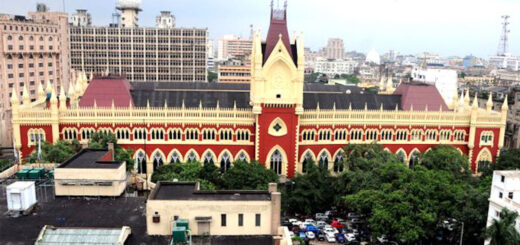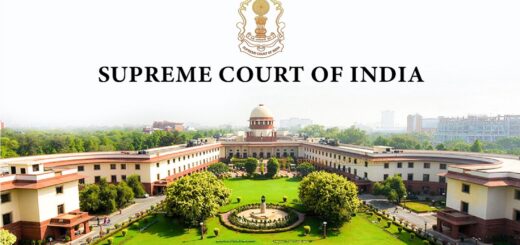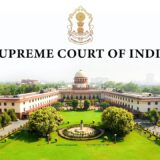The Supreme Court stated that the court should use its discretion under Section 5 of the Limitation Act only in rare situations where there is a very strong reason to allow a delay.

The Supreme Court noted that it should use its discretion under Section 5 of the Limitation Act, 1963 only in rare situations where a compelling case is presented for allowing a delay in submitting a Section 11(6) application under the Arbitration and Conciliation Act, 1996 (A&C Act). This observation came during a civil appeal against a Bombay High Court decision that permitted a petition under Section 11(6) of the A&C Act and appointed a Sole Arbitrator to resolve disputes between the parties. The two-Judge Bench, led by CJI D.Y. Chandrachud and Justice J.B. Pardiwala, stated, “The goal of quick dispute resolution under the 1996 Act should be considered by courts when reviewing a request for delay condonation in filing an application for an arbitrator under Section 11(6). Therefore, the court should only use its discretion under Section 5 of the Limitation Act in exceptional cases where the applicant presents a strong argument for the delay.” The Bench emphasized that a key requirement for seeking relief under Section 5 of the Limitation Act is that the applicant must demonstrate to the Court that there was a valid reason preventing them from filing the application on time.
The appellant, a government-owned company, was involved in making bio-fuels, while the respondent specialized in manufacturing and supplying equipment for sugar factories. In 2012, the appellant issued tenders to increase the capacity of several process stations, and the respondent won the bidding. Following this, the appellant placed purchase orders with the respondent, who then sent invoices. During the project, the appellant raised concerns about the slow work pace, the quality of materials, and missed deadlines by the respondent. Both parties tried to resolve these issues through discussions.
From October 2013 to January 2014, their talks did not lead to a solution regarding payment and service deficiencies. The respondent sent an email requesting the release of the remaining payment to finish the work, but the appellant refused to pay the outstanding amount. This led to a legal notice demanding payment. Consequently, an arbitration petition was filed in the High Court. The National Company Law Tribunal (NCLT) accepted the respondent’s application and appointed an Interim Resolution Professional (IRP), but this decision was overturned by the National Company Appellate Tribunal (NCLAT). The respondent then filed a new petition in the High Court for the appointment of an arbitrator, which was granted. The appellant, unhappy with this decision, took the matter to the Supreme Court.
Several issues were presented to the Supreme Court:
- Is the new application filed by the respondent under section 11(6) of the Act, 1996 valid, especially since the High Court did not allow a new application when the first one was withdrawn?
- Is the new application filed on 09.12.2022 under section 11(6) of the Act, 1996 too late? If it is, can the respondent benefit from section 14 of the Limitation Act? Specifically, can the time spent on proceedings under the IBC be excluded when calculating the time limit for the application under section 11(6)?
- Can the delay in filing the new arbitration application under section 11(6) of the Act, 1996 be excused under section 5 of the Limitation Act?
In addressing the first issue, the Court observed that while an application under Section 11(6) of the Act, 1996 is not a suit and does not strictly follow Order 23 Rule 1 of the CPC, the Court has previously applied the principles of this rule to other proceedings based on public policy. The appellant argued that these principles should also apply to applications for appointing an arbitrator under Section 11(6) of the Act, 1996. The Court further stated that a petition under Section 11(6) of the A&C Act is not just about appointing an arbitrator; it is fundamentally about starting the actual arbitration process.
The complete withdrawal of a Section 11(6) petition means giving up not just the request to appoint an arbitrator but also the request to start the actual arbitration process. This effectively means abandoning the arbitration itself. It leads to the abandonment of the hypothetical ‘arbitration proceeding’ that began under Section 21, which is a significant loss. Therefore, it is crucial to apply the principles of Order 23 Rule 1 of the CPC to the abandonment of applications under Section 11(6), the court noted.
Regarding the second point, the Court stated that the High Court made a mistake by claiming that an application under Section 9 of the Insolvency and Bankruptcy Code, 2016 (IBC) and an application under Section 11(6) of the A&C Act seek the same relief. It explained that the first application aims to start the Corporate Insolvency Resolution Process (CIRP) for the corporate debtor, while the second seeks to appoint an arbitrator to resolve disputes from a contract.
The purpose of starting insolvency proceedings under the IBC is to rehabilitate the corporate debtor by appointing new management, while the goal of appointing an arbitrator is to settle disputes between parties from a private contract. Once the CIRP is initiated, it becomes a public proceeding. In contrast, arbitration deals with private disputes and is not a public proceeding. The Court emphasized that insolvency proceedings are fundamentally different from debt recovery processes, such as lawsuits for money recovery, execution of decrees, or claims under arbitration.
Insolvency proceedings cannot be seen as the same as regular recovery actions. Therefore, there is no basis for excluding time under Section 14(2) of the Limitation Act, 1963. The relief requested in a Section 11(6) application is different from that in a Section 9 application under the IBC, so the respondent cannot benefit from Section 14(2) in this case, the court stated. Regarding the final issue, the court noted that without a specific legal exclusion, there is no reason to deny the benefit of Section 5 of the Limitation Act for delays in filing a Section 11(6) application. While it is common for applicants to submit a formal request under Section 5, the law does not explicitly require it. Thus, even without a formal application, a court or tribunal can choose to use its discretion under Section 5 if the applicant provides a valid reason for the delay. Consequently, the Apex Court granted the appeal and overturned the previous order.
Cause Title: M/s HPCL Bio-Fuels Ltd. v. M/s. Shahaji Bhanudas Bhad (Neutral Citation: 2024 INSC 851)









